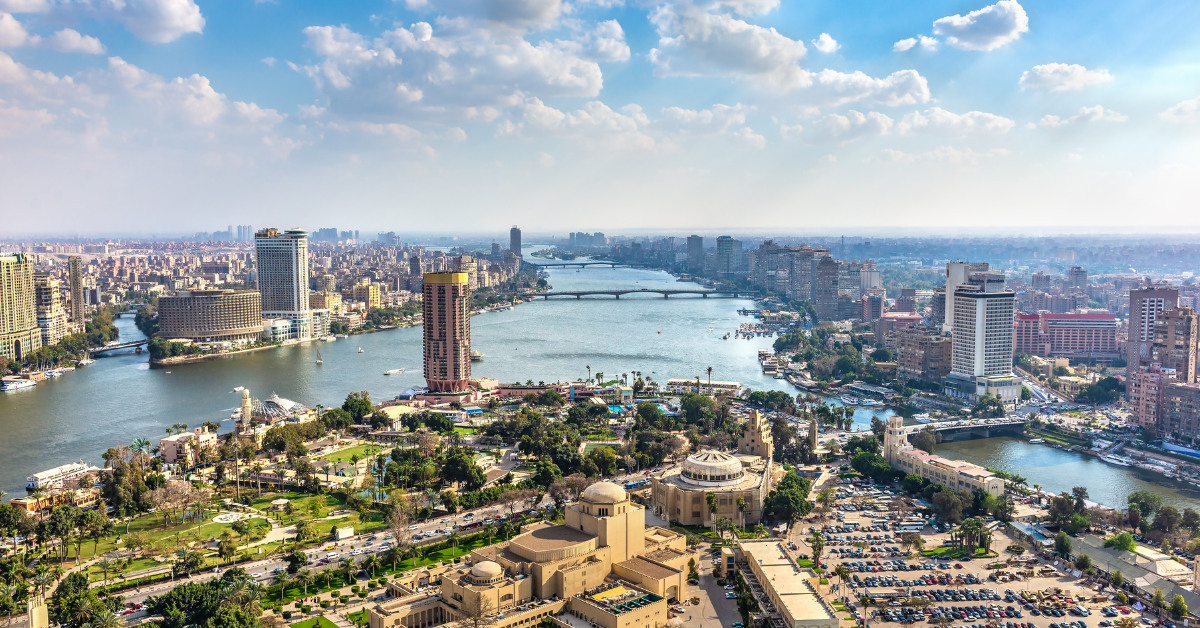Cairo, the capital of Egypt, is sometimes represented in Japanese using the kanji “改羅” or “開羅.” These characters are not official names but phonetic transcriptions, reflecting how Japan historically adopted foreign words. Beyond language, Cairo has become a city that fascinates Japanese people with its history, culture, and unique energy.
Kanji Representations of Cairo
The Difference Between “改羅” and “開羅”
The kanji used to denote Cairo are not official designations but phonetic transcriptions. From the Meiji era to the early Showa period, “改羅” appeared frequently in geography books and newspapers, while “開羅” was sometimes used in literary contexts to emphasize an open, urban character.
| Kanji | Usage Example | Connotation |
|---|---|---|
| 改羅 | Geography books and newspapers (Meiji–Showa) | Expresses the sound directly |
| 開羅 | Literary works, descriptive texts | Suggests openness and urbanity |
These differences are more than wordplay; they reflect how Japan absorbed and adapted foreign cultures.
The Image Japanese People Have of Cairo
Symbol of Ancient Civilization
The association of Cairo with the pyramids and the Sphinx is deeply ingrained among Japanese people. In education and media, Cairo is highlighted as the “center of history and civilization,” reinforcing its appeal as a tourist destination.
Market Vibrancy and Daily Life
Cairo’s famous Khan el-Khalili bazaar is a bustling hub where spices, fabrics, and ornaments are sold. For Japanese visitors, Cairo evokes the image of a city where one can experience exotic vibrancy amidst the crowds.
| Tourist Feature | Japanese Perception | Highlighted Appeal |
|---|---|---|
| Pyramids | Experience eternal history | Value as a World Heritage site |
| Khan el-Khalili | Overwhelmed by bustle and vibrancy | Direct contact with Arab culture |
| Nile River | Sense of eternal flow and romance | Symbol of civilization |
The Coexistence of Chaos and Charm
Cairo is sometimes seen as a chaotic city due to traffic jams and noise, yet the beauty of Islamic architecture and coexistence of religions gives it the image of a city that is both disorderly and rich in culture.
Impressions of Japanese Tourists
Traveler experiences reveal both positive aspects and challenges.
| Positive Impressions | Points of Concern |
|---|---|
| Grand historical heritage | Heavy traffic congestion |
| Bustling markets and spice culture | Persistent solicitation of tourists |
| Beautiful multi-religious architecture | Harsh heat and environmental conditions |
Thus, Cairo is etched in the Japanese mind as a city where aspiration and chaos coexist.
Cairo and Its Relationship with Sports
The Passion for Soccer
Egypt is a soccer powerhouse, and Cairo is its hub. The two major clubs, Al Ahly and Zamalek, are internationally renowned, and on match days, the city is electrified. Cairo International Stadium hosts tournaments such as the Africa Cup of Nations, connecting the city with the global sports community.
Sports Tourism for Japanese Visitors
Some tourists combine sightseeing with soccer matches. For sports lovers, Cairo offers a unique opportunity to experience both history and modern sporting excitement.
| Sports Element | Japanese Perception | Characteristics |
|---|---|---|
| Soccer Clubs (Al Ahly, Zamalek) | Amazed at passionate fan culture | Africa’s top-tier teams |
| Cairo International Stadium | Impressed by hosting global events | Capacity of tens of thousands |
| Sports Tourism | Combines sightseeing with matches | A new travel style |
Cultural and Artistic Dimensions
Cairo is also a hub of art and entertainment. The Egyptian film industry is known as the “Hollywood of the Arab world”, while music and performing arts thrive. For Japanese audiences, Cairo often symbolizes a city of culture and creativity through films, literature, and art.
| Cultural Element | Japanese Impression |
|---|---|
| Egyptian cinema | Artistic and unique |
| Music and dance | Exotic and vibrant |
| Islamic architecture | Harmony of history and religion |
Conclusion
Cairo can be written in kanji as “改羅” or “開羅,” and for Japanese people, it is both a symbol of ancient civilization and a city where one can experience the bustle and chaos of the modern world. Sports, particularly soccer, add a new dimension, shaping the image of Cairo as a city of history, energy, tradition, and passion.
In short, Cairo is remembered by Japanese people as a city that embodies both eternal history and the vibrancy of the present.






